John Waters on his weird and wonderful world, celebrated in new LA exhibition
The cult filmmaker invites us into his studio ahead of ‘John Waters: Pope of Trash’, at LA’s Academy Museum of Motion Pictures (from 17 September)
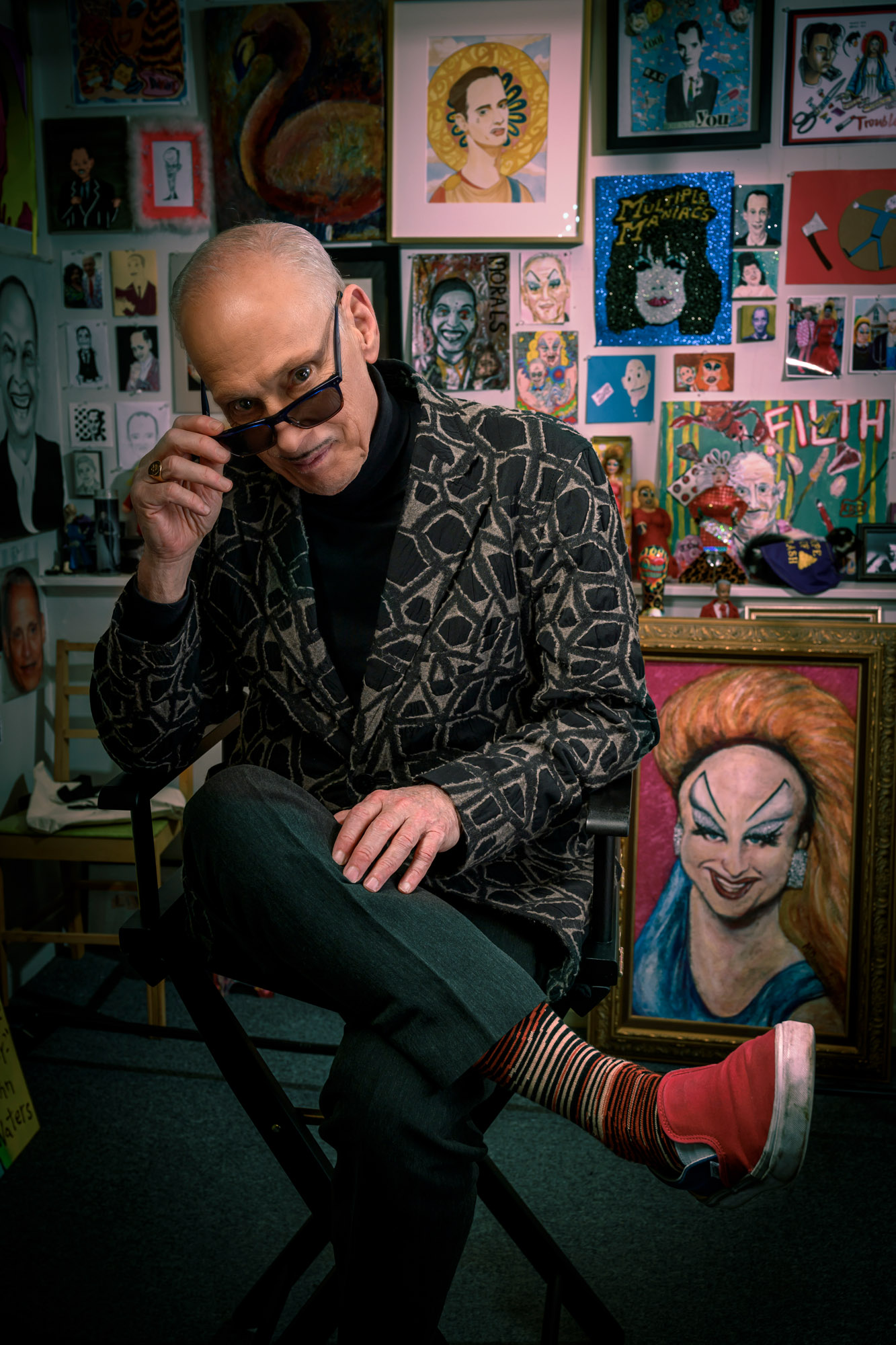
When LA’s Academy Museum of Motion Pictures opened in 2021, its most popular exhibit spotlighted the ruby slippers from The Wizard of Oz. It’s a shame they’re no longer on view because, in September 2023, John Waters (among our Wallpaper* USA 300) will follow an alternative yellow brick road to his own Emerald City – Hollywood – when the museum honours him with the first comprehensive exhibition of his artefacts, photographs, scrapbooks and movies.
‘John Waters: Pope of Trash’
Waters quips, ‘The Wizard of Oz is still my favourite movie, but I never understood why Dorothy wanted to go back home to that dreary farm when she had gay lions, winged monkeys and magic shoes.’
Since the 1960s, the Baltimore-born filmmaker has borrowed from the trashiest of B-movies, gore and sex-laden offerings by the likes of Herschell Gordon Lewis and Russ Meyer, while contributing his own low-brow humour, high-camp style and elements of fantasy. His early inspirations were basic. ‘I watched foreign movies because they broke all the censorship laws, and I watched exploitation movies. Baltimore was a treasure trove of exploitation distribution.’
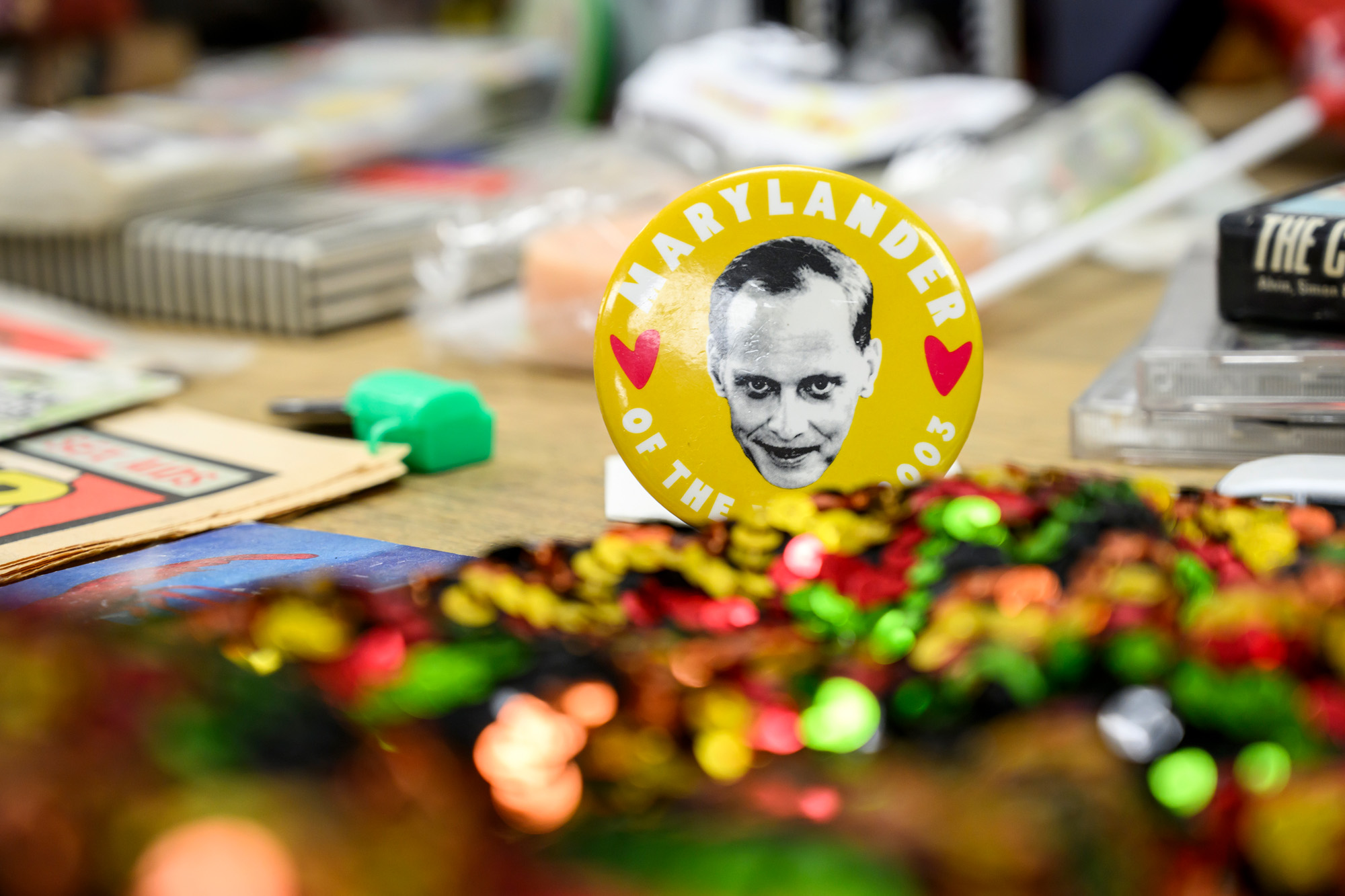
Collected objects in Waters’ studio
From the underground success of Pink Flamingos (1972), starring the voluptuous and coprophiliac Divine (the pseudonym of his principal star Harris Glenn Milstead) to Hairspray (1988), which went on to become a Broadway musical, Waters has employed his black humour in outrageous and obnoxious stories, no matter what the budget.
This exhibition can be seen as a blue-chip endorsement of his achievements. ‘I’m incredibly proud, with no irony,’ he says. ‘It’s an example for every crazy kid. Basically, anything can happen.’ He is also getting his own star on the Hollywood Walk of Fame.
Academy Museum curator Jenny He explains that the show opens with an ‘abstracted church setting that winks at several aspects of John’s personal history and filmmaking’, while ‘an experiential dance gallery’ will highlight the importance of music in his films. Displays will be packed with his old cameras, memos, handwritten scripts, and props like the exploding wig worn by Debbie Harry in Hairspray and the tutu sported by Jean Hill in Desperate Living.
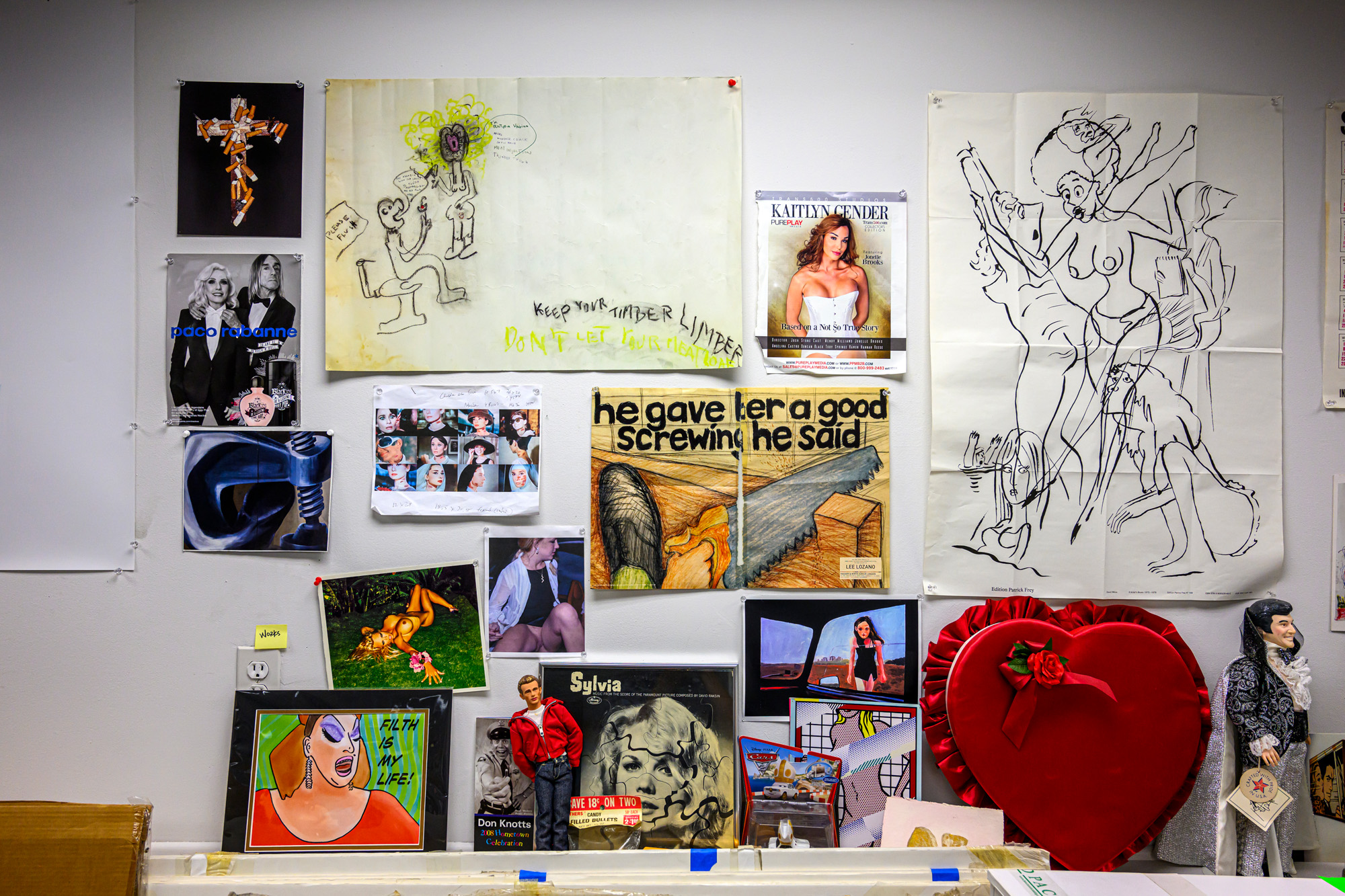
On the studio wall
‘This is an exciting moment to reflect on John’s career,’ says associate curator Dara Jaffe. ‘Many of the socio-economic themes from his films, like class, taste and propriety, have undergone significant social transformation over the last several decades. A striking example is Pink Flamingos, which faced bans in multiple countries and carried an X rating by the MPAA upon its release. In 2021, the Library of Congress inducted it into its National Film Registry.’
Wallpaper* Newsletter
Receive our daily digest of inspiration, escapism and design stories from around the world direct to your inbox.
Waters still sports the pencil-thin moustache he adopted after first seeing it on Little Richard. His primary residence is in his native Baltimore, though he also has places in New York, San Francisco and Provincetown, where he has long summered. Baltimore, however, is the wellspring, where, in his early films, he drafted friends to be the cast. ‘We all hung around together, gay, straight, black, white, poor, because none of us could even make it in our own minorities. I tried to make a movie that would make us laugh, and I still do.’
Raised in an affluent family, Waters was educated at private Catholic schools. Puppets were his first theatre and he had a small stage and costume box at home. ‘I was a puppeteer for children’s parties from ages 11-14. I got $25 a show, which was a lot.’
His parents took him to see The Howdy Doody Show being filmed for television in New York. Seeing the small stage and the cameras, he recalls, ‘I was excited and I knew this is it. This is the world I’m gonna be in.’
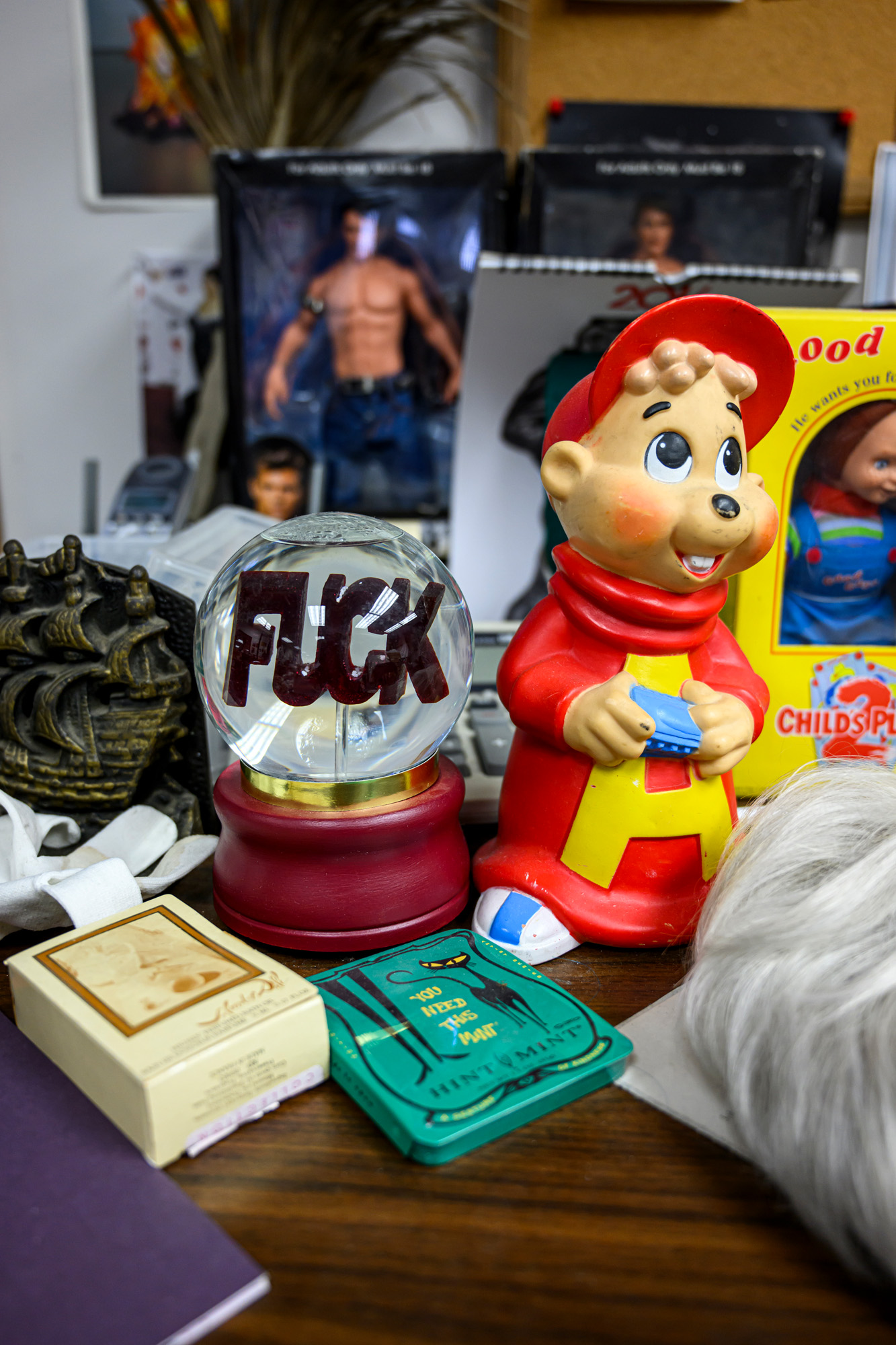
Collected objects
In the 1960s, he enrolled at NYU, got thrown out, discovered the films of Andy Warhol and Jonas Mekas, and set out on the filmmaking path with the 8mm black-and-white Hag in a Black Leather Jacket. Waters’ parents grudgingly supported his aspirations, even loaning him $10,000 to make Pink Flamingos, provided he pay them back with interest, which he did. ‘I was driven to do this. There was no reason for me to go to school. I knew what I wanted to do,’ he says.
Indirectly, his background contributed. ‘I was raised with extreme good taste so I could make fun of those rules. I couldn’t have rebelled if I didn’t know the rules,’ he says. ‘To break the rules with style, you have to know the rules.’ Think of Kathleen Turner in Serial Mom, driven to murder after seeing someone wearing white shoes after Labor Day.
Despite the appalling behaviour of his characters, the audiences are generally on their sides. ‘The right people win morally in my movies with the values they set up,’ Waters explains. ‘My whole career was exaggerating things that people would use against you, turning it into style. Anger leads to rebellion, and rebellion is how you can embrace what people use against you and win with it. That has been the subject matter and the moral of every movie, every book, every show I’ve ever done.’
‘John Waters: Pope of Trash’ will be on show from 17 September 2023 – 4 August 2024 at the Academy Museum of Motion Pictures, Wilshire Boulevard, Los Angeles, academymuseum.org
-
 Put these emerging artists on your radar
Put these emerging artists on your radarThis crop of six new talents is poised to shake up the art world. Get to know them now
By Tianna Williams
-
 Dining at Pyrá feels like a Mediterranean kiss on both cheeks
Dining at Pyrá feels like a Mediterranean kiss on both cheeksDesigned by House of Dré, this Lonsdale Road addition dishes up an enticing fusion of Greek and Spanish cooking
By Sofia de la Cruz
-
 Creased, crumpled: S/S 2025 menswear is about clothes that have ‘lived a life’
Creased, crumpled: S/S 2025 menswear is about clothes that have ‘lived a life’The S/S 2025 menswear collections see designers embrace the creased and the crumpled, conjuring a mood of laidback languor that ran through the season – captured here by photographer Steve Harnacke and stylist Nicola Neri for Wallpaper*
By Jack Moss
-
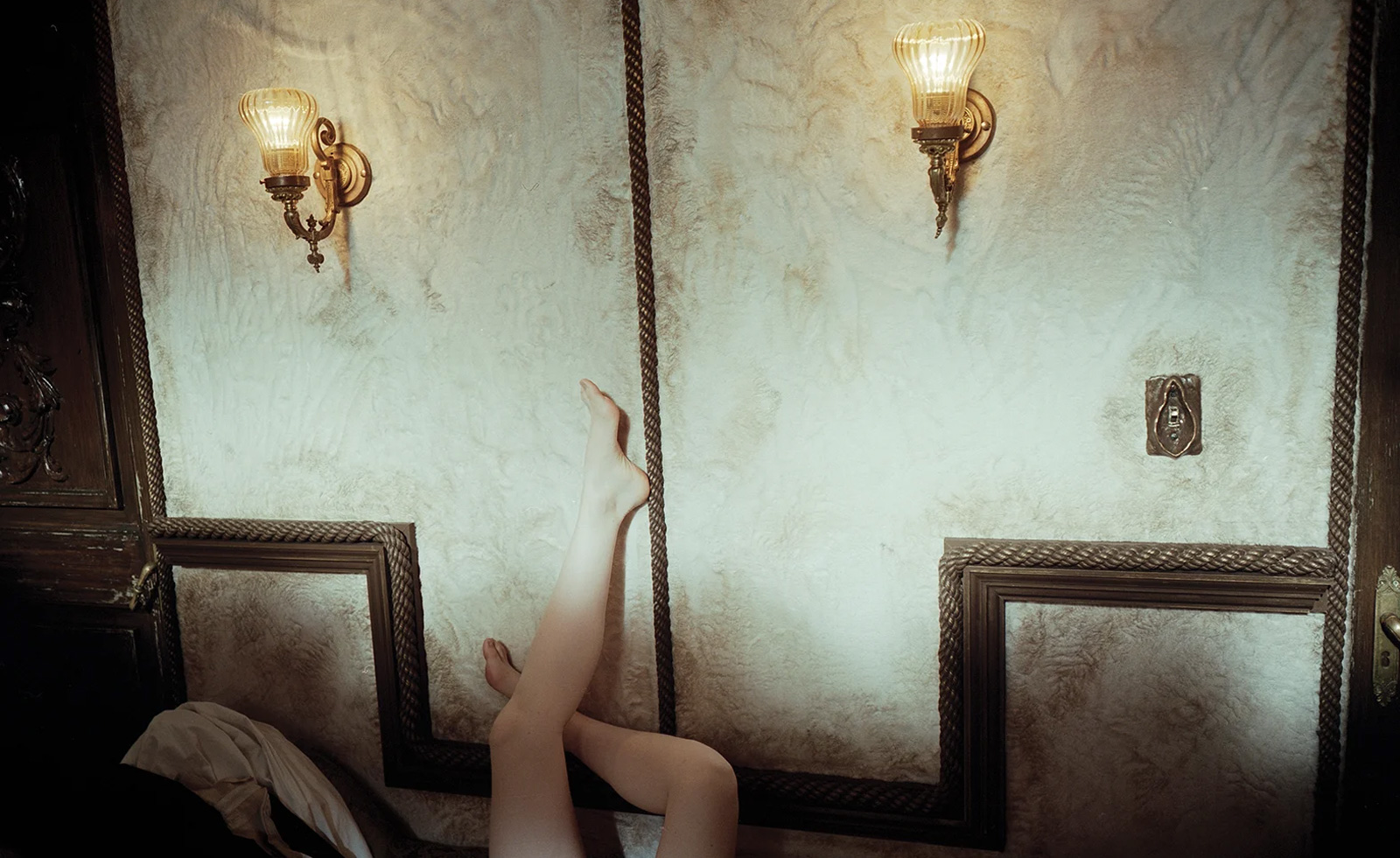 Unlike the gloriously grotesque imagery in his films, Yorgos Lanthimos’ photographs are quietly beautiful
Unlike the gloriously grotesque imagery in his films, Yorgos Lanthimos’ photographs are quietly beautifulAn exhibition at Webber Gallery in Los Angeles presents Yorgos Lanthimos’ photography
By Katie Tobin
-
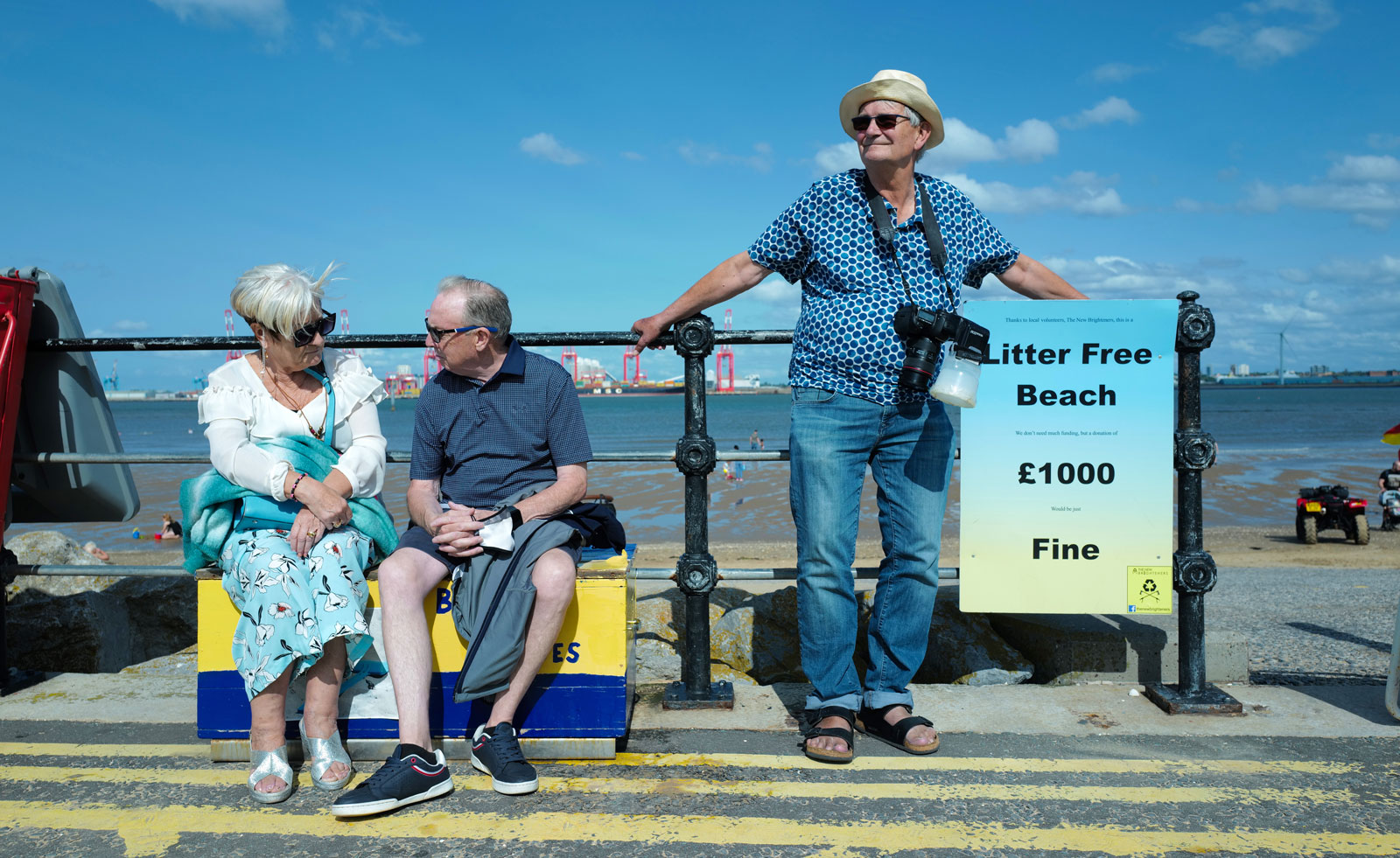 ‘Life is strange and life is funny’: a new film goes inside the world of Martin Parr
‘Life is strange and life is funny’: a new film goes inside the world of Martin Parr‘I Am Martin Parr’, directed by Lee Shulman, makes the much-loved photographer the subject
By Hannah Silver
-
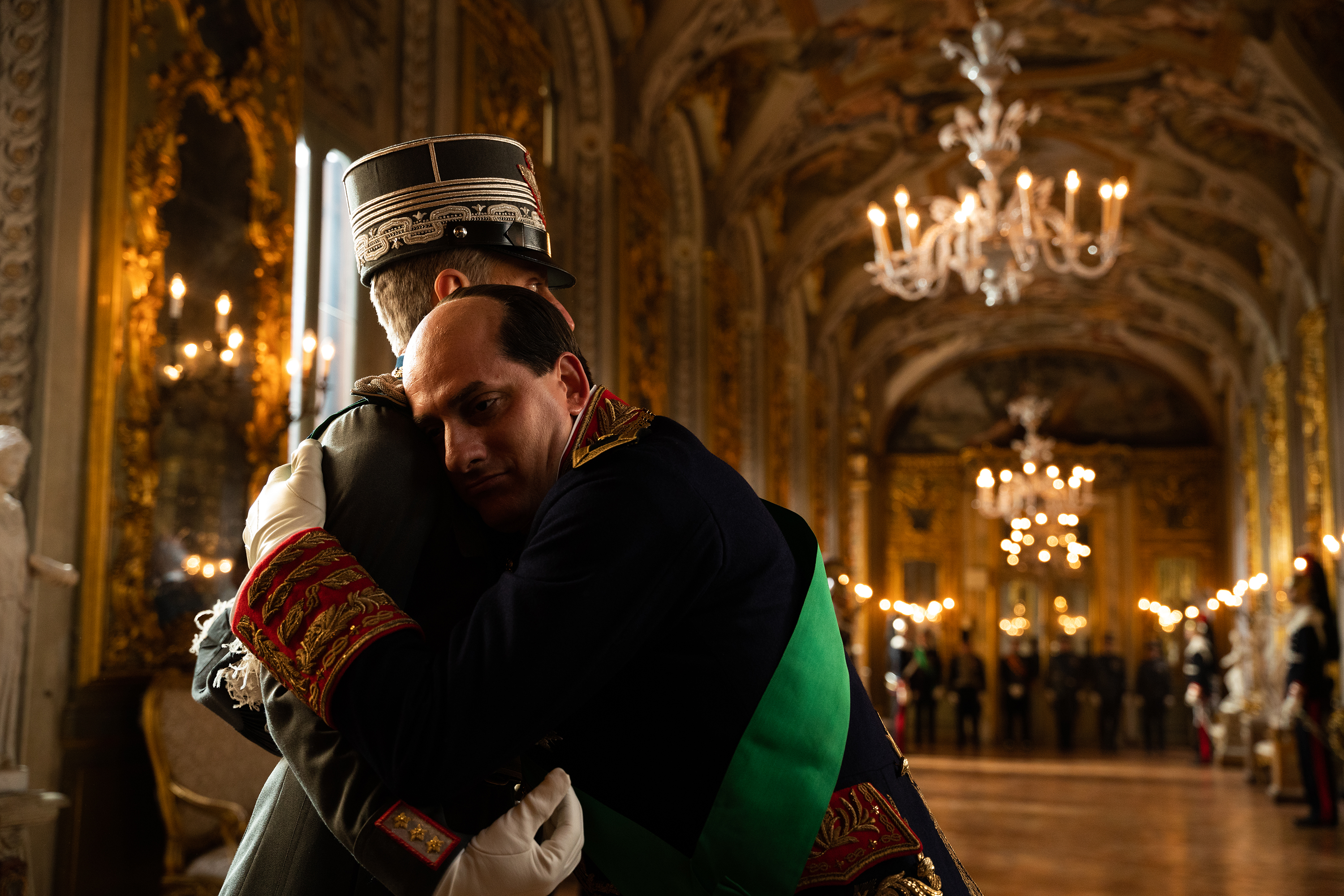 The Chemical Brothers’ Tom Rowlands on creating an electronic score for historical drama, Mussolini
The Chemical Brothers’ Tom Rowlands on creating an electronic score for historical drama, MussoliniTom Rowlands has composed ‘The Way Violence Should Be’ for Sky’s eight-part, Italian-language Mussolini: Son of the Century
By Craig McLean
-
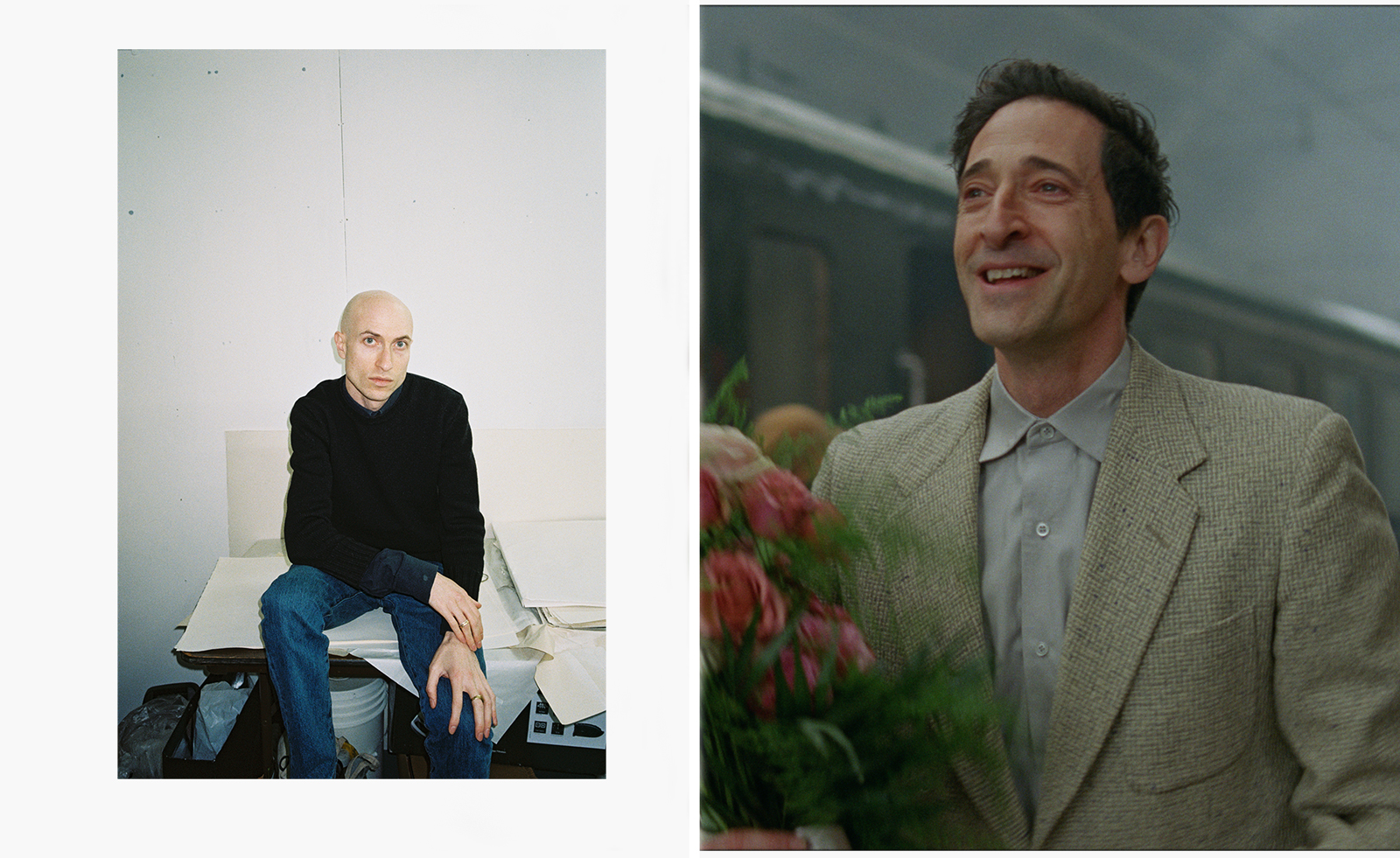 Meet Daniel Blumberg, the British indie rock veteran who created The Brutalist’s score
Meet Daniel Blumberg, the British indie rock veteran who created The Brutalist’s scoreOscar and BAFTA-winning Blumberg has created an epic score for Brady Corbet’s film The Brutalist.
By Craig McLean
-
 Remembering David Lynch (1946-2025), filmmaking master and creative dark horse
Remembering David Lynch (1946-2025), filmmaking master and creative dark horseDavid Lynch has died aged 78. Craig McLean pays tribute, recalling the cult filmmaker, his works, musings and myriad interests, from music-making to coffee entrepreneurship
By Craig McLean
-
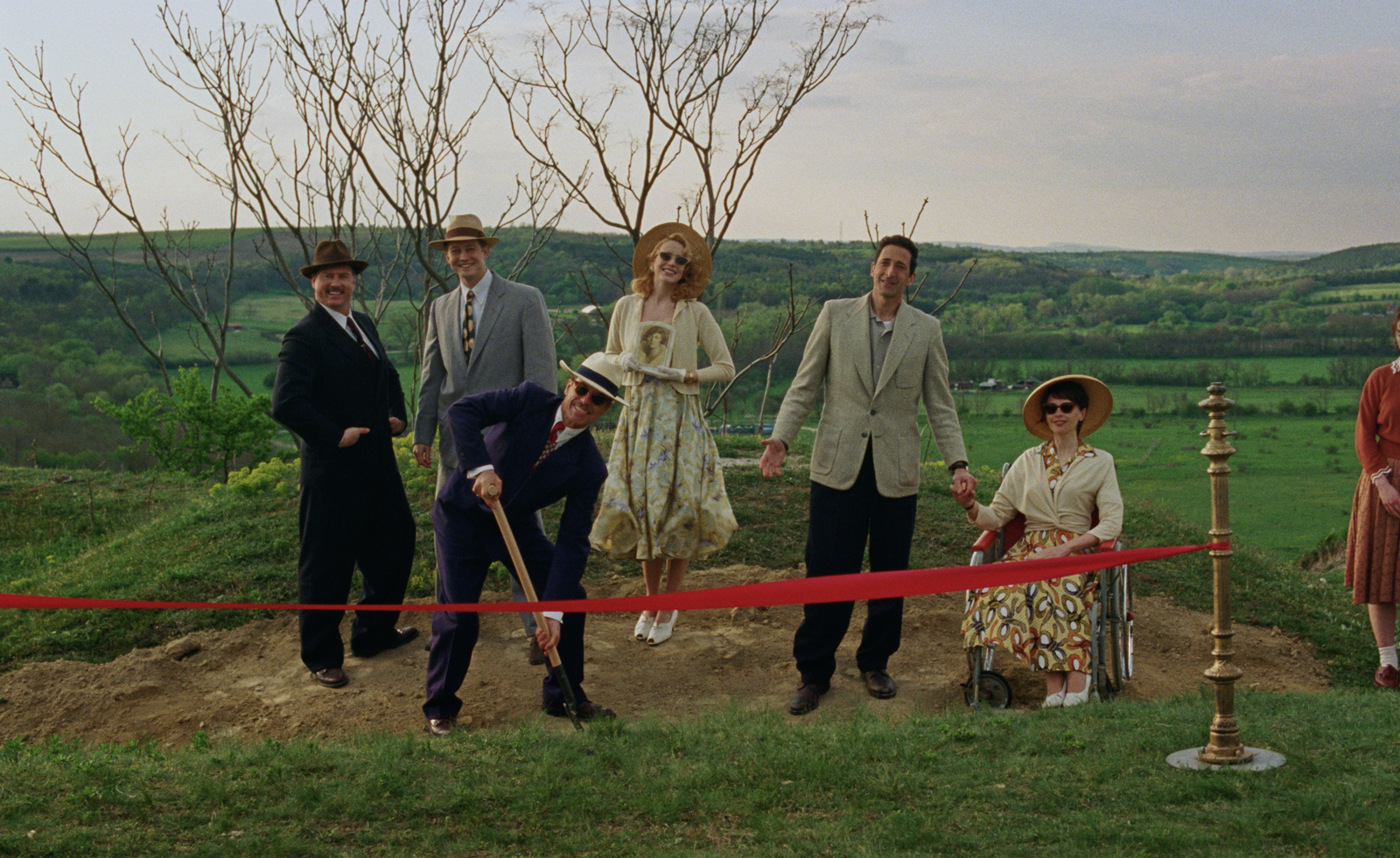 Architecture and the new world: The Brutalist reframes the American dream
Architecture and the new world: The Brutalist reframes the American dreamBrady Corbet’s third feature film, The Brutalist, demonstrates how violence is a building block for ideology
By Billie Walker
-
 ‘It creates mental horrors’ – why The Thing game remains so chilling
‘It creates mental horrors’ – why The Thing game remains so chillingWallpaper* speaks to two of the developers behind 2002’s cult classic The Thing video game, who hope the release of a remastered version can terrify a new generation of gamers
By Thomas Hobbs
-
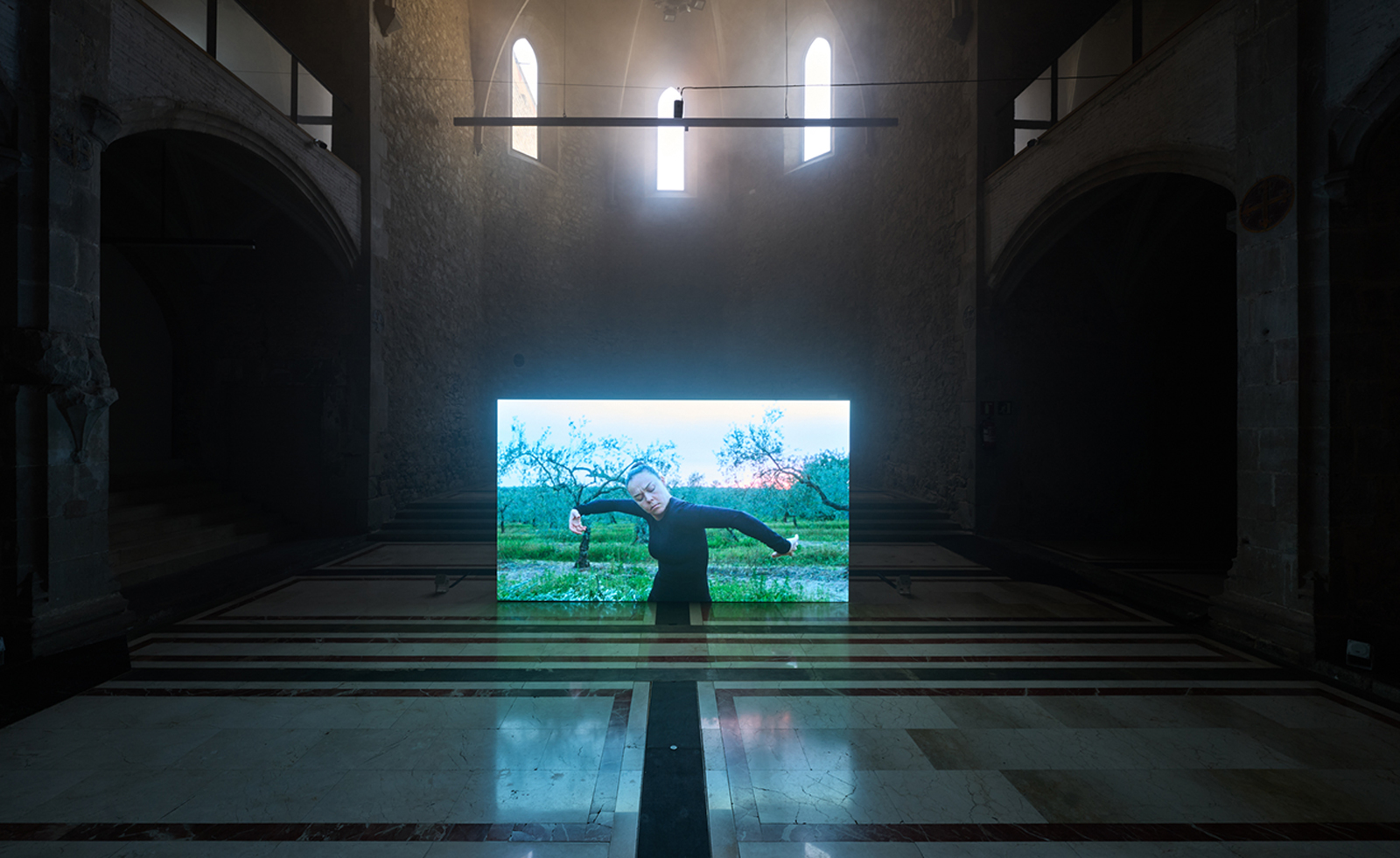 Wu Tsang reinterprets Carmen's story in Barcelona
Wu Tsang reinterprets Carmen's story in BarcelonaWu Tsang rethinks Carmen with an opera-theatre hybrid show and a film installation, recently premiered at MACBA in Barcelona (until 3 November)
By Emily Steer